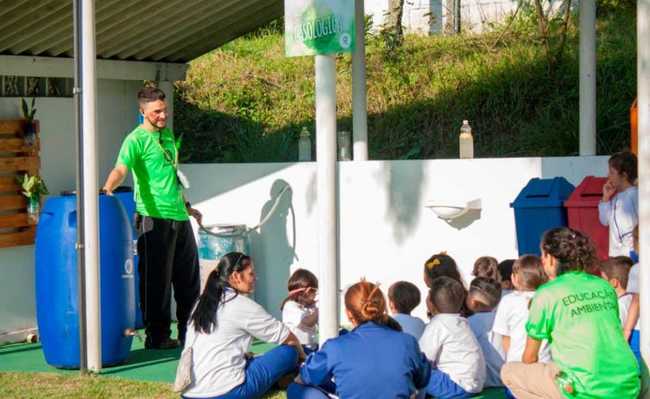Nine tips for setting up a community garden in condominiums
Set up an urban community garden project in your condominium, check out the tips for this idea to work

Eating fresh organic products can become a reality for you who live in buildings in the middle of the city. The popularity of urban community gardens is only growing in Brazil and in the world, and building one in the common area of the condominium is a great option to promote organic agriculture, generate healthy food, contribute to the aesthetics of common areas, assist in the education of children and even serve as a leisure activity for residents (see the article "Really get to know organic food" the advantages of these products).
This practice is becoming more and more common in cities due to the ease of access to information on how to create a community garden. It is not necessary for people to be specialized; anyone can seek information and join this initiative. Space is no longer an excuse either, as there are several solutions for growing plants in small spaces, such as vertical gardens. The watering of vegetables can be carried out by capturing rainwater through a system of cisterns, which will also bring savings in the long term. The community garden project, in addition to the economic benefits, can create healthier habits in the childhood of children and all families. Check out nine tips to introduce a collective garden in your condominium:
1. Approval
Spread the idea among the residents and work to get the idea approved.
2. Choose a suitable place with high sunlight
If your condo is large, space won't be an issue; take advantage of the green areas that have no vegetation. If the condominium is large but does not have a permeable area, that is, with available land, build beds with bricks, waterproofing blanket and, finally, land... Or buy ready-made beds like the noocity. If space is an issue, there is the option to plant in pots such as vertical gardens, the pots can still be made from “trash” like PET bottles through the process of upcycling, see more in the article "With style and conscience, upcycle transforms your garbage". There are techniques that allow you to grow different foods on 1 m², so it is possible to create an urban garden in small spaces.
3. Choose a place to compost
The most suitable for your garden is to use organic fertilizer and the best, free of charge. Residents can reuse solid organic waste that would go to waste and compost it.
4. Create rules
It is necessary to establish a plan with the watering scales in the garden so as not to lack or overdo the water. When it's harvest time, set a day and time for residents who want to participate to be able to plan. But remember the meaning of the garden is to be communal; leave it free in case anyone needs any of the food.
5. Choose the species to be planted
Take into account the depth of the soil, the time of year and the region where you live. Choose certified organic seeds and seedlings.
6. Plant
Take the children and anyone else who wants to participate to plant the seedlings and seeds. This is a relaxing job and an opportunity to get in touch with nature.
7. Carry out garden maintenance periodically
Irrigation must be established by the condominium employees or by the person in charge of the garden and must be carried out every day in the morning to avoid wasting water through evaporation. Removing weeds and preventing pests is important to preserve garden growth. It is not necessary to use chemicals to eliminate pests; there are more sustainable techniques, as explained in the article "Five pest control techniques for organic gardens".
8. Harvest time!
When a batch of vegetables is ready to be harvested, do so with other residents. One idea is to assemble kits to distribute among the apartments or leave them in a place to be removed by whoever wishes. Here, common sense is in order, take only what is necessary and remember that more people may also need what you need.
9. Other tips…
Set a specific day every week to take the children to work in the garden - frequent contact with nature is healthy and effective in learning. It is possible, after each harvest, for example, to have community meals among the residents using food from the garden. There will be social integration and coexistence between neighbors will become more harmonious.
See the course that the eCycle portal prepared to help you create your organic garden:- Organic Gardens Course #1: Learn the Basics and Learn How to Plan Yours
- Organic Gardens Course #2: Improve Soil Quality with Home Fertilizers
- Organic gardens course #3 and #4: sowing, germination and seedling transplantation
- Organic gardens course #5: how to do it and what are the advantages of plant rotation and intercropping
- Organic Gardens Course #6: How to Make Your Potted Garden
- Organic Gardens Course #7 and #8: Learn about common types of pests and see how to fight them with homemade products
- Organic Gardens Course #9: Protect your crop from excessive heat and cold and keep it balanced
All steps are available and the only factor needed is initiative. Talk to the manager and residents, make the place where you live more sustainable; think of your condo as a community and promote good coexistence.
Watch a video of a condominium's initiative to create an organic community garden.










